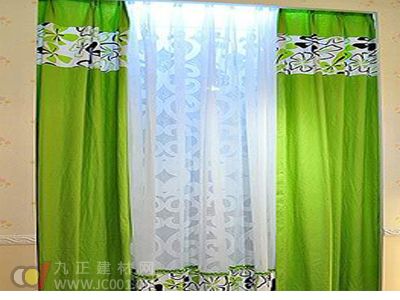Curtain purchase tips
When it comes to choosing a curtain rod, the first thing you should consider is its load-bearing capacity. Plastic rods tend to age quickly, while aluminum alloy rods are not very strong or durable, and leather rubber can easily crack. Iron rods may fall off over time, but the best option is pure stainless steel — though it’s more expensive. To improve stability, adding more eyelets can help distribute the force more evenly.
If you want a long-term solution, using a track system allows you to add multiple wall codes easily. The curtain and fabric are sewn together, so when you change the track, you can remove the curtain separately for easier cleaning and maintenance. This setup also makes it possible to install three layers of curtains (curtain + window screen + fabric), offering better functionality than traditional hanging rods.

Another important point is that Accessories often account for two-thirds of the total cost. Many people assume that a curtain costing 30-40 yuan per meter isn’t expensive, but when it comes to installation, they often find out that the cloth itself only makes up one-third of the price. The rest goes to rails, plugs, pulleys, hooks, laces, drawstrings, and other components. These items are usually sold separately, so it's wise to negotiate with the store and try to save on fabric costs.
Also, be sure to reclaim any leftover fabric at the end. Standard curtain fabric is typically 2.8 meters in height, but the actual width needed depends on your space. If you're making a 2.5-meter-high curtain, you can leave an extra 20-30 cm of fabric. Even if you don't need it, it's better to take it back. For smaller windows, like in a study or living room, a half-curtain of about 1.5 meters might be sufficient. Failing to reclaim the remaining 1.3 meters could mean losing nearly half the cost.
The leftover fabric can be cut to size and used for things like curtain ties, laces, or even cushion covers. With a little creativity, you can turn it into decorative elements that complement your existing curtains, creating a cohesive look and enhancing the overall style of your space.
Finally, measuring curtains requires some skill. Always measure the window’s width and height before purchasing. If there’s a curtain box, measure from the inside; if there’s a window frame, measure from the outside. The basic rule is to ensure the curtain length extends beyond the window sill. A floor-length curtain looks more elegant and can make small windows stand out more.
To calculate the fabric needed, use this formula: [fixed height (curtain height + 5)] × length of fabric to buy > wall width × 3 (note: round up to the nearest whole number). This ensures you have enough material for a full, well-fitted curtain.
Zinc Door Handle On Zinc Rosette
Zinc Door Handle On Zinc Rosette,Zinc Door Handle,Zinc Rosette Door Handle,Zinc Alloy Door Handle
Wenzhou Shenghong Metal Products Co.,Ltd , https://www.shenghonglock.com